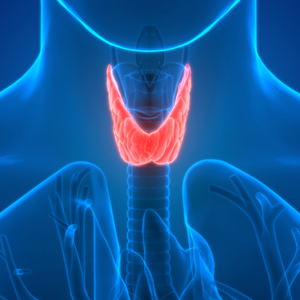The American Thyroid Association held its 2019 Annual Meeting from October 30 to November 3 in Chicago. Below are brief summaries of important oral presentations on thyroid cancer from the meeting.

Photo credit: Getty
Incidence and Incidence-Based Mortality in a State
Results of a retrospective analysis of thyroid cancer incidence and incidence-based mortality in a population-based cohort were presented by Yan et al (Poster 57). Researchers conducted this analysis using data from the California Cancer Registry, which reports on malignancies from all health-care institutions in the state. They calculated incidence rates and adjusted them by age to the 2000 California Census population, and they used a stratified logistic regression model to estimate changes in incidence-based mortality. The analysis included 44,943 patients diagnosed with thyroid cancer between 2000 and 2012. The team found that the incidence of thyroid cancer is increasing and that this rise is not limited to small papillary thyroid cancers. They also identified increases in incidence-based mortality among men and among individuals with larger tumors.
Real-World Outcomes With Second-Line Therapy
Chatterjee et al conducted a retrospective, observational cohort study evaluating second-line treatments among patients who had initiated and discontinued first-line treatment with lenvatinib between January 1, 2016, and April 3, 2017 (Poster 388). Twenty-four physicians from the Cardinal Health Oncology Provider Extended Network submitted case-report forms on a total of 181 patients, and the researchers estimated outcomes including overall and progression-free survival. Results from the study indicate a clinical benefit associated with first-line lenvantinib followed by second-line therapy.
Lateral Lymph Node Mapping With Carbon Nanoparticles
Huang et al presented the results of a multicenter, prospective study assessing carbon nanoparticle–based mapping in patients who have papillary thyroid cancer and suspicious neck lesions on ultrasound or computed tomography (Oral 38). Researchers injected carbon nanoparticles peritumorally into the thyroid gland, then performed lateral neck dissections in 122 patients. Results indicate that this method successfully maps the lateral neck lymph nodes and can distinguish risk for lateral neck metastases.
Molecular Profiling
In a pilot study, Gomes-Lima et al genotyped and performed molecular profiling on tissue from primary tumor and metastatic sites in 12 patients with differentiated thyroid cancer (Highlighted Oral 5). Their results suggest that molecular abnormalities in primary tumor and metastatic sites can be heterogeneous, which may explain differences in therapeutic responses.
Fine-Needle Aspiration in Pediatric Patients
The Bethesda classification system is used for both adult and pediatric thyroid nodules, but it is not clear whether the implied malignancy risk for each category is the same for children and adults. Jiang et al conducted a retrospective review for 171 patients who underwent a thyroid fine-needle aspiration at the tertiary pediatric hospital from December 1, 2002, to November 30, 2018, and classified results according to the Bethesda criteria (Oral 34). They found a much higher malignancy rate in thyroid nodules of pediatric patients compared to that reported for adults. Although the Bethesda system accurately identified low-risk benign nodules, malignancy risk in all other Bethesda categories was much higher.
Fukushima Health Management Survey
Following the March 2011 Fukushima Daiichi nuclear disaster, Japan implemented a thyroid ultrasound examination program for residents aged 18 years or younger at the time of the accident. Fine-needle aspiration cytology was conducted according to Japanese guidelines for thyroid nodules. Shimura et al analyzed the implementation rate of fine-needle aspiration and the detection rate of thyroid malignancy among 2,744 patients in the program who had had thyroid nodules at least 5.1 mm in size (Oral 35). Results from their analysis suggest that protocols based on the Japanese guidelines avoided unnecessary fine-needle aspirations, particularly for nodules smaller than 10.1 mm.
To view more news from the meeting, visit https://www.thyroid.org/media-main/.

